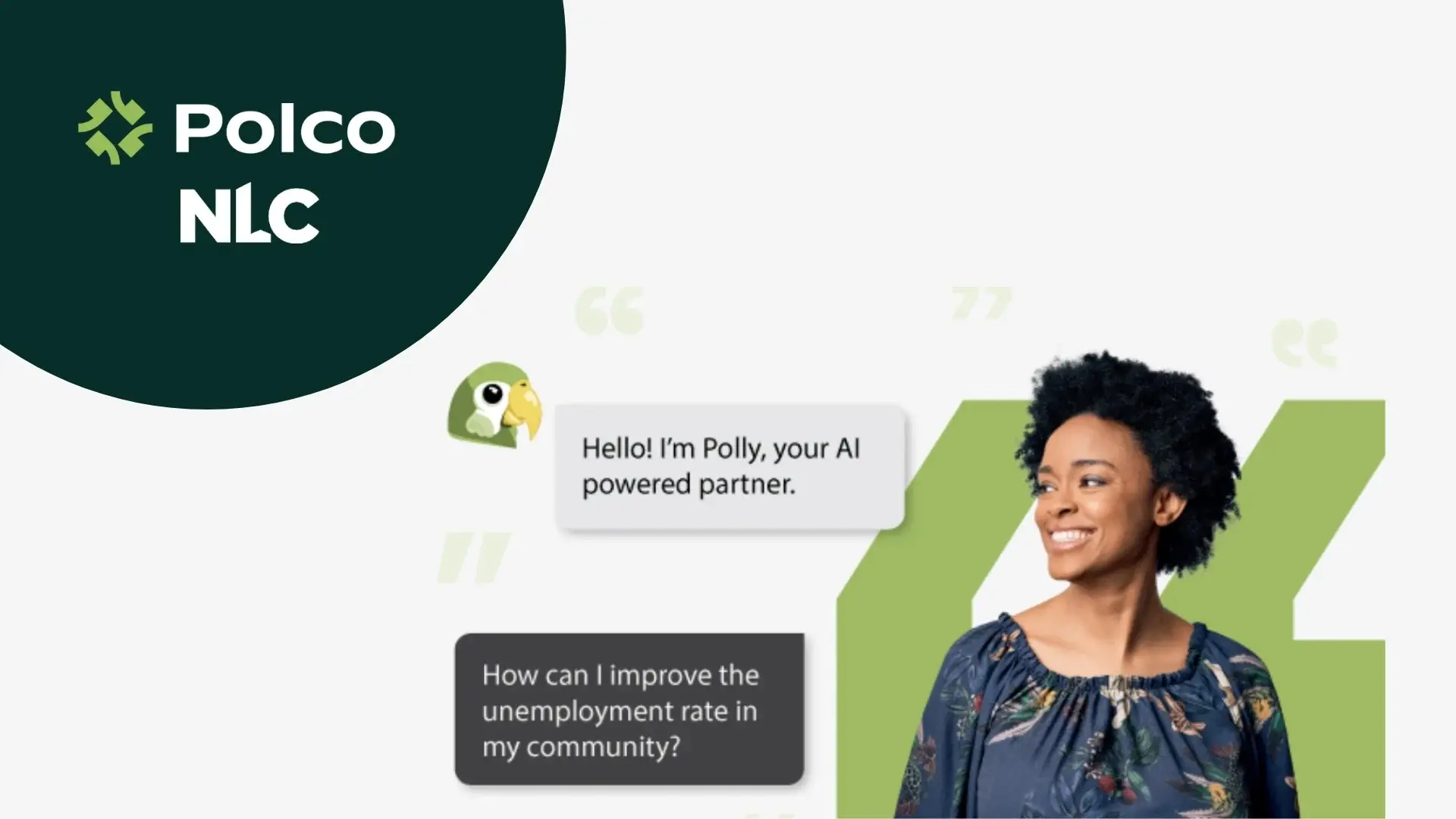How To Improve Workplace Communication Culture With Modern Messaging Tech
By Polco on March 18, 2024

How do local governments build a healthy workplace communication culture despite the overwhelming noise in our professional lives?
Effective communication is critical to local government work. It shapes our understanding of tasks, fosters collaboration across departments, instills a sense of security among team members, and drives efficiency by letting them know what is required.
Today, there are more ways than ever to share internal information. Slack or Teams, email, text, newsletters, bulletin boards, meetings, and in-person discussions are all at our disposal.
Despite today’s wealth of options, local government workplace communication has not improved much.
Data from The National Employee Survey (The NES) by Polco, an assessment that measures local government job satisfaction, shows that approval of internal communication has barely budged since the proliferation of these apps (69% in 2014 to 72% in 2022).
With so many new communication methods, one might think workplace communication would be perfected. Instead, these messaging technologies have created more discord than clarity.
How do governments create a strong communication culture in the contemporary world with more messaging tools than ever before?

The Problem With Modern Messaging Technology
Today’s messaging technology allows us to share information quickly and easily.
The NES shows that the speed with which local governments communicate information has significantly improved. Five in ten local government employees were happy with the speed of organizational communication in 2019 compared to about seven in ten in 2024.
While fast, that frictionless experience encourages too much unnecessary chatter.
 “More is not always better,” said Nick Kittle, a local government innovation expert who helps organizations overcome internal challenges, such as communication. Kittle founded one of the first innovation offices in the country and wrote a book on the subject, Sustainovation.
“More is not always better,” said Nick Kittle, a local government innovation expert who helps organizations overcome internal challenges, such as communication. Kittle founded one of the first innovation offices in the country and wrote a book on the subject, Sustainovation.
The barrage of messages from all angles interrupts deep work. It also takes time to address all these alerts.
“We were not designed ever to take in the amount of information that is being thrown our direction,” Kittle said. “[Now people] are getting overwhelmed with information constantly and tuning things out.”
Moreover, insignificant information gets communicated at the same level of importance as critical information. How are employees supposed to discern?
“Not all messaging is key messaging,” Kittle said. “Knowing what is truly important is an art.”
He adds that different generations prefer different tools.
Kittle says older people assume that younger people know everything about technology. But the younger generation is not versed in older tech, Many young people forgo email, for example.

Strategies for Local Governments To Build a Healthy Communication Culture
To overcome these modern challenges, Kittle suggests that local government organizations establish clear guidelines for their different communication channels.
He also says important messages should be communicated three times more in a channel where people expect to receive critical information. And that channel shouldn’t be a chat app where the most noise exists.
“Folks that communicate well will never share critically important organizational messages through Teams.” Kittle said.
Kittle also advocates for communication training within local government organizations. Often overlooked, training helps employees understand the established communication mechanisms and ensures employees adhere to organizational guidelines.
This training becomes crucial to fostering an effective communication culture within the workplace.
Personal Accountability Is Essential for Effective Communication
Once leaders have established their communication guidelines and trained the staff, the onus then falls on the employee.
“I believe in an internal locus of control. If I want to understand something, it is my responsibility to [figure it out],” Kittle said. “It’s not okay for staff members to just throw their hands up and be like, ‘Well, I never find anything out,’ when the information is available to them.”
In addition, most people have blind spots in their own communication abilities. Kittle surveys his clients and always finds people always think they themselves are the better communicators and others are the problem. Instilling a culture of accountability helps reverse this idea.
“Nobody gets to decide how you feel about your life if you love your job. That's your choice,” Kittle said. “It's the same thing with communication. I can decide how little or how much I want to be communicated with if I have access to information, which in the public sector, quite often we do.”
Get More Ideas on How To Improve the Public Sector Workplace at CultureCon
Communication is just one component of work culture. If you’re looking to improve all aspects of your workplace, CultureCon EdGov Summit will showcase the art and science of cultivating a thriving workplace in government and higher education. Polco is proud to participate in the Madison, Wisconsin, event on May 9, where CEO Nick Mastronardi will present.
Sign up with Polco to get 20% off registration.
Related Articles
Popular posts
Sign-up for Updates
You May Also Like
These Related Stories

How to Transform the Local Government Workplace Culture

Forward Together: Top Ten Messages Local Governments Need Most Right Now

